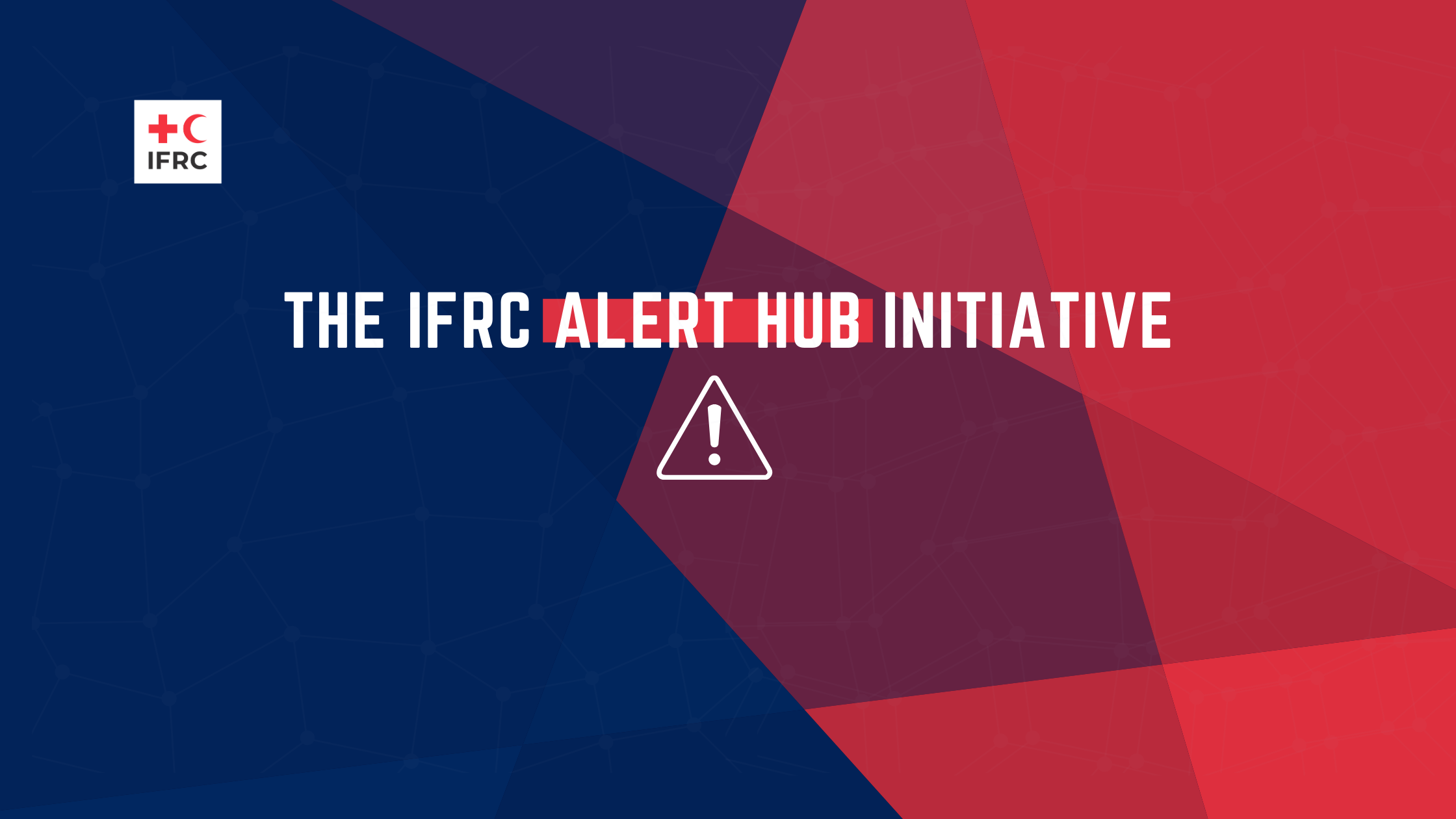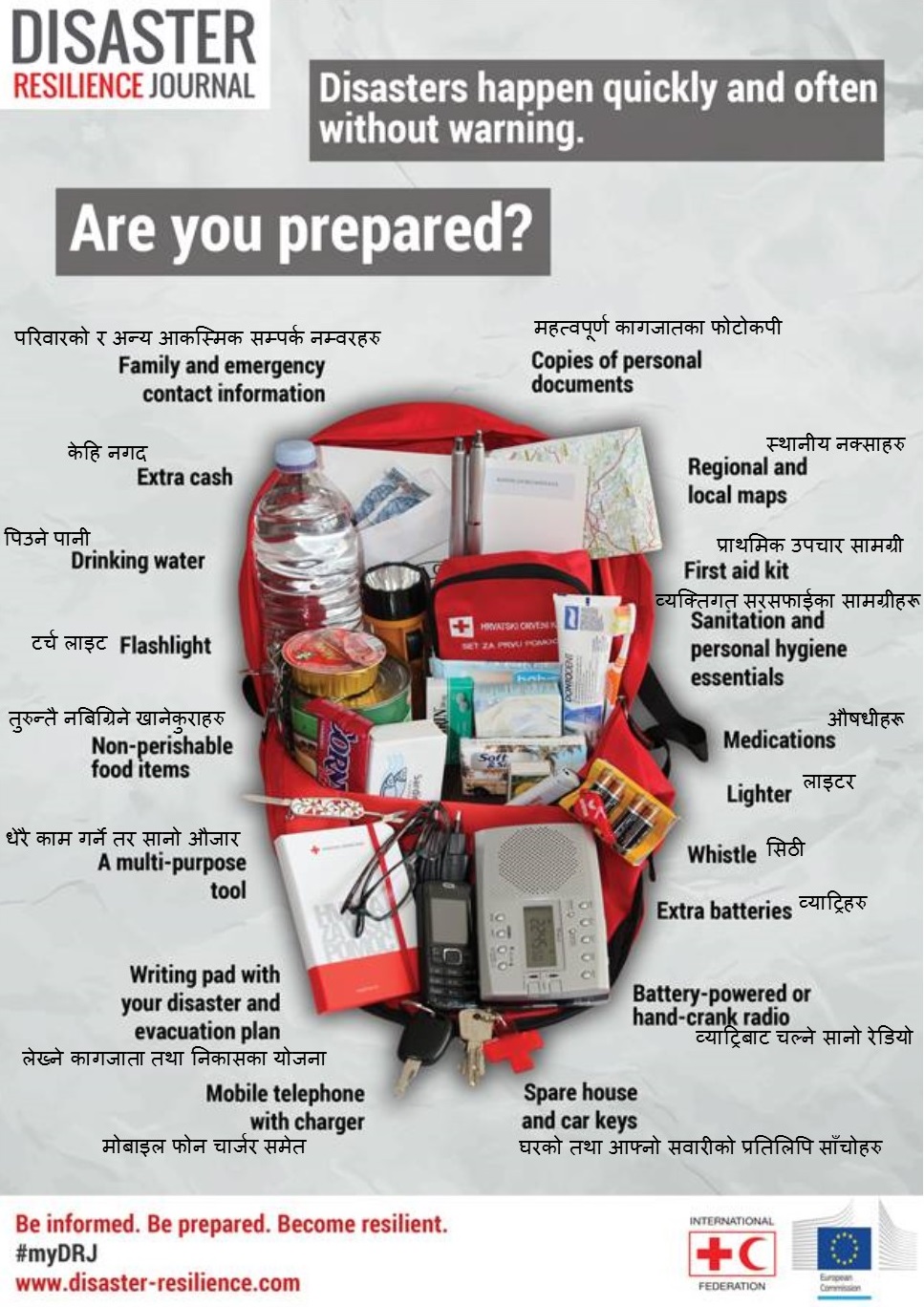Upskilling for Resilience: A Guide to Free Online Disaster Preparedness Training

As disasters continue to challenge communities worldwide, it is crucial for disaster management practitioners to stay up-to-date with the latest knowledge, training, and skills to help keep communities safer during these crises. To aid in the professional development of this critical workforce, the Global Disaster Preparedness Center (GDPC) has curated a list of free online courses. These enable disaster management and humanitarian professionals to expand their expertise across diverse aspects of disaster preparedness and risk reduction - ranging from disaster risk financing to nature-based solutions.
Organizations like the International Federation of Red Cross and Red Crescent Societies (IFRC), the United Nations, the World Bank, Start Network, and edX offer a set of high-quality, accessible training courses free of charge. These training materials are designed to address key themes such as:
Early Warning and Early Action
In its Public Awareness Public Education (PAPE) & the WhatNow Service: localizing action-oriented messages, the IFRC introduces you to the following points:
- PAPE & the WhatNow Service.
- PAPE — Actionable messages to reduce disaster risks.
- Adapting and adopting key messages at a national level.
- The WhatNow Service — a digital repository of critical messages.
Modules 1 and 2 are meant for anyone interested in initiating a collaborative, multi-stakeholder process to adapt and adopt key actionable messages at a national level. Module 3 is intended explicitly for National Society representatives wishing to upload their vital, actionable messages onto the digital platform, the WhatNow service.
The Anticipatory Action: A Proactive Approach to Disaster Risk Management is a training driven by the changing climate, the frequency and severity of extreme climate and weather events have increased and will continue to do so. Yet progress in observation data, satellite imagery, and computer modeling over recent decades means that we can now make increasingly precise predictions about when and where hurricanes, drought, flood, and other hazards are likely to occur and what their potential impacts on people will be. These advances in forecasting make anticipatory action possible.
Anticipatory action refers to actions taken before a disaster or crisis hits to prevent or reduce potential humanitarian impacts before a shock or acute effects are felt. The actions are carried out based on forecasts or predictions of how the event will unfold. The types of actions vary and depend on the hazard and context and can range from evacuation, the reinforcement of homes, and the distribution of health protection kits to mobile cooling centers and cash distribution.
Another e-learning course is Preparedness for Effective Response (PER.) The PER Approach aims to enable National Societies to fulfill their auxiliary role by strengthening local preparedness capacities to ensure timely and effective humanitarian assistance to prevent and alleviate human suffering. The training will provide an overview of the PER Approach and a fundamental understanding of what the PER Approach is, why it is used, and how it works.
Disaster Risk Reduction
A Resilient Future: Science and Technology for Disaster Risk Reduction aims to introduce participants to existing and emerging technologies suitable for disaster risk reduction while promoting the overall aim of sustainable development. The course focuses on three main natural hazards: floods, landslides, and earthquakes. It also discusses the challenges and limits of adapting and adopting technologies depending on context (Global North and Global South) with examples from Switzerland, Nepal, Colombia, the Philippines, and other countries.
The content of this course includes but not limited to:
- Explain Disaster Risk Reduction (DRR) related concepts, science, and technology for DRR.
- Identify and describe existing and emerging technologies for landslide and flood reduction.
- Explain methodological tools for assessing vulnerabilities and risk and strengthening the resilience of communities at risk of landslides, floods, and earthquakes.
Disaster Law and Policy for the Protection of the Most Vulnerable is a course designed to help you learn about the role of law and policies in disaster risk management at both the international and national levels. Experienced academics and practitioners will provide you with deep insights into the legislative and institutional frameworks that apply to the different phases of disaster risk management, such as risk reduction and prevention to preparedness, response, and recovery.
You will explore how international, regional, and national legal and policy frameworks can effectively reduce the impact of catastrophic events on exposed communities and ensure the protection of the most vulnerable by regulating the conduct of all actors involved in disaster-related activities. This includes authorities of both affected and supporting countries, intergovernmental organizations, non-governmental organizations, civil society, including the National Red Cross and Red Crescent Societies, and the private sector.
The Introduction to Disaster Risk Management is another self-paced training material provided by the World Bank. This introductory course familiarizes development practitioners with contemporary concepts and practices in disaster management and discusses the paradigm shift from reactive to proactive approaches in this cross-cutting development field. You will have access to timely resources such as:
- Ted likes video talks.
- Podcasts
- Formal learnings (i.e., Self-paced courses/Facilitated Courses/MOOCs)
- Live events and Knowledge Exchanges
- Communities of Practice
Disaster Law and Policy for the Protection of the Most Vulnerable is a course designed to help you learn about the role of law and policies in disaster risk management at both the international and national levels. Experienced academics and practitioners will provide you with deep insights into the legislative and institutional frameworks that apply to the different phases of disaster risk management, such as risk reduction and prevention to preparedness, response, and recovery.
You will explore how international, regional, and national legal and policy frameworks can effectively reduce the impact of catastrophic events on exposed communities and ensure the protection of the most vulnerable by regulating the conduct of all actors involved in disaster-related activities. This includes authorities of both affected and supporting countries, intergovernmental organizations, non-governmental organizations, civil society, including the National Red Cross and Red Crescent Societies, and the private sector.
Disaster Risk Financing
The IFRC provides insights about Cash Assistance through Financial Service Providers ‘FSP’ during disasters. The content includes, but is not limited to:
- Determining Cash Feasibility.
- Mapping Financial Service Providers and Risk Management.
- Identifying Procurement Basics.
- Requirements for FSPs.
- Understanding Procurement Authorization Levels.
- Launching a Tender.
- Addressing Issues for Contracted FSPs.
In a similar vein, Start Network presents a course entitled Introduction to Disaster Risk Financing (DRF.) This self-guided course will build your understanding of Start Ready's Disaster Risk Financing-DRF proactive approach to predictable triggered funding at scale for foreseeable crises, using innovative risk analysis, collective planning, scientific modeling, and pre-positioned financing.
Contingency Planning in Disaster Risk Financing (DRF) is meant to build knowledge on the 1st pillar, the Contingency plan. It is divided into three units to define the contingency plan and its importance, the preparations needed, and the process to design it according to the Start Ready Building Blocks framework.
Climate Adaptation and Resilience
The theme of climate change adaptation is enriched by many educational materials designed by the United Nations, EDX, and Kaya. The Thought Leadership Course - Synergizing Disaster Risk Reduction and Climate Change Adaptation explores the integration of Disaster Risk Reduction (DRR) and Climate Change Adaptation (CCA), focusing on good practices, attitudes, and behaviors towards their integration. It supports you with a clear understanding of the synergies between DRR and CCA.
Upon successful completion of this course, participants should:
- Have a clear understanding of the synergies between DRR and CCA.
- Be able to define integration between DRR and CCA.
- Identify good practices on DRR-CCA integration and implementation.
- Facilitate further changes in attitudes and behaviors towards the integration of disaster risk reduction and climate change adaptation.
In the Nature-based Solutions for Disaster and Climate Resilience, UNEP and environmental experts from around the world will provide you with answers to those questions, reaching out to you, to planners, policymakers, engineers, businesses, and youth. This is an opportunity to join a community of learners and environmental advocates.
First, touching upon “why,” the course introduces nature-based solutions for disaster and climate resilience, benefits, and potential opportunities. Then, specific modules aimed at different target audiences will focus on the practical application of nature-based solutions, the “how.”
Your Road Map to Community Resilience is another efficient training material to explore and get hands-on with the IFRC’s Road Map to Community Resilience through the Enhanced Vulnerability and Capacity Assessment (R2R via EVCA). This course is intended to familiarize you with the IFRC’s key concepts and approaches to community resilience and how to apply them in RCRC programs and actions.



